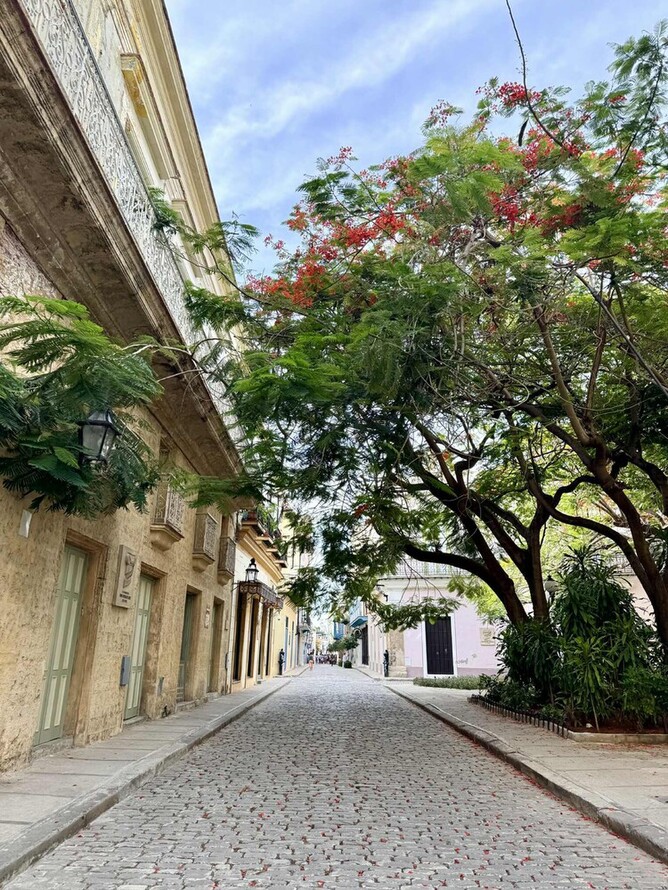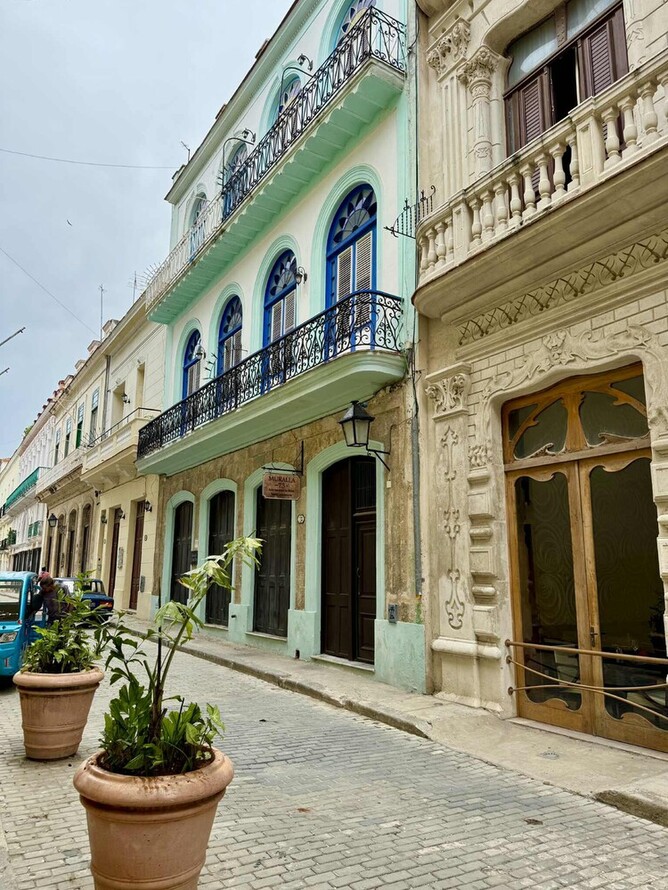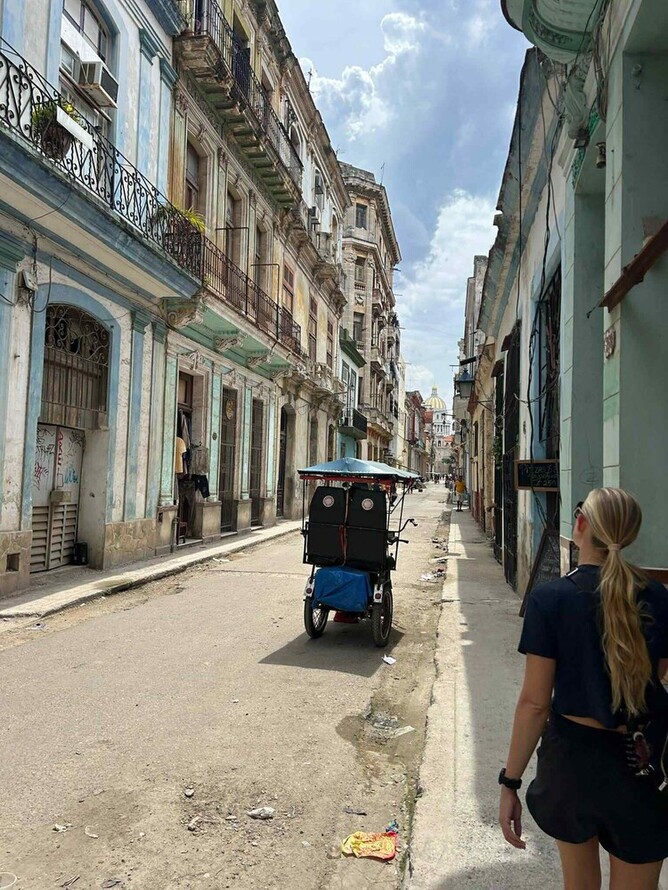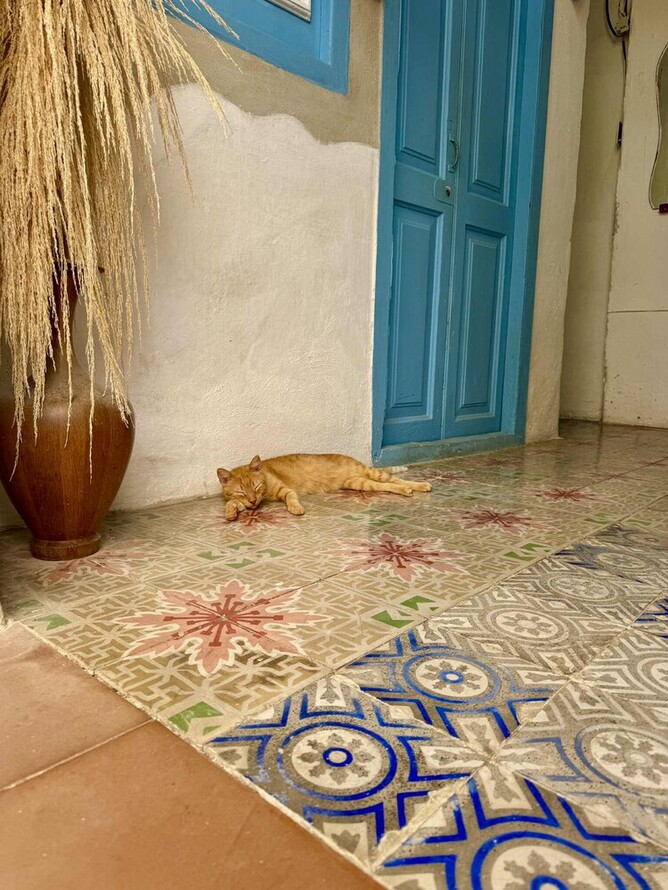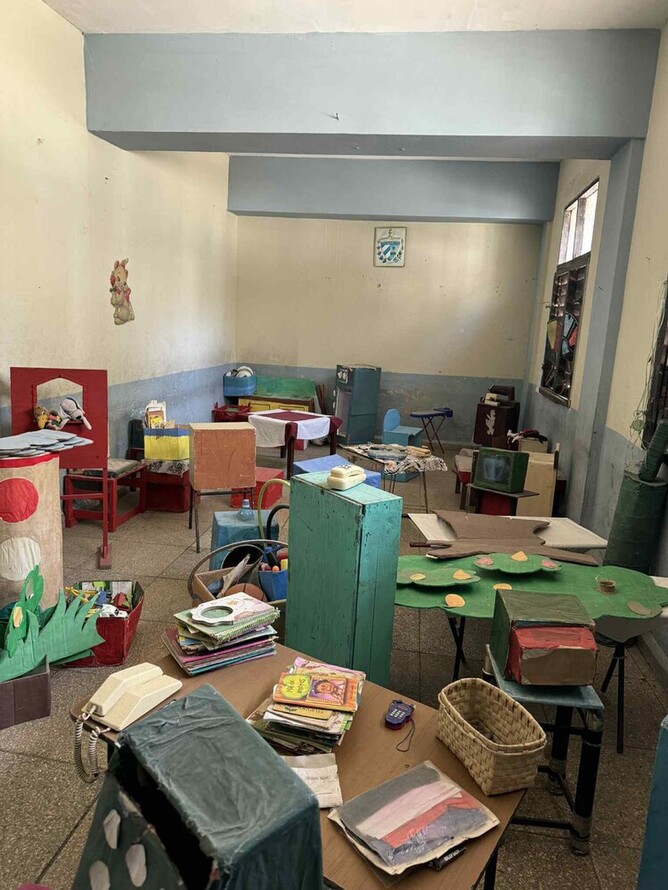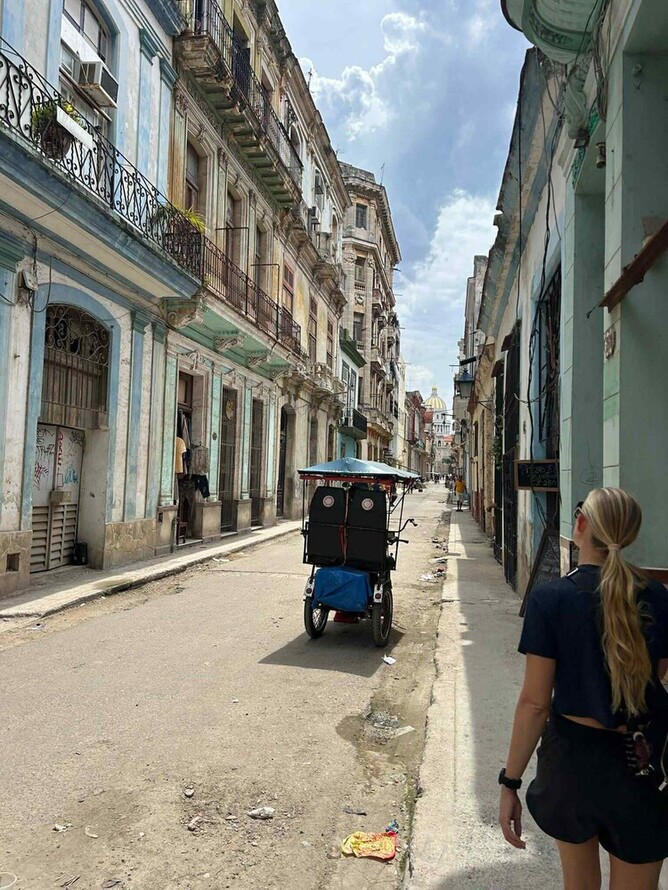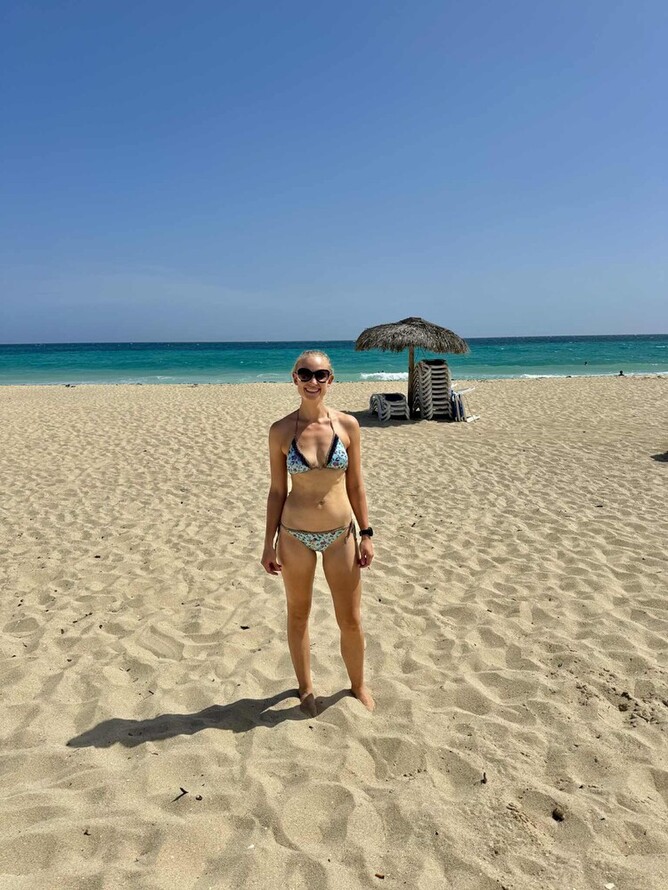Cuba. A country of contrasts. A country of immense beauty and an incredibly rich history yet so poor. Everywhere you turn, you see people struggling. Struggling to put food on the table for their children. To pay for school lunches. Basic necessities such as rice, beans, clean water and period care products. A population that is desperately malnourished. Deserted streets at night due to high crime rates (among the locals, not tourists). But also an incredibly kind and highly educated population that love their country. In Old Havana you will find beautiful, colourful buildings from colonial times. High quality coffee and chocolate. Amazing food. But move beyond the chains of Old Havana and you will see a different story. A story of survival. But also a story of incredible resilience.
Expectations versus reality
Before coming to Cuba, I had a very idolised image of Cuba. I thought Cuba was like a time capsule. I imagined it would be like travelling back to the 60s. Classic cars. Colourful buildings from Colonial times. Cigars. People in brightly coloured clothes. Mojitos. Music. I had even read that I could go running by myself on the Malecón. Call me naive. I probably am. But, here’s the thing. I had actually done quite a bit of research on Cuba. I had read travel guides and articles. Let me tell you: I had a pretty hefty list of things and places I wanted to do and see in Cuba. None of these travel guides dedicated a single word to the struggle that many Cubans face every single day. They all talked about sipping mojitos on rooftop bars, driving classic cars around the streets of Havana, drinking cortaditos (which by the way, is a delicious Cuban coffee that you must try), wandering around the old streets, admiring architecture from a time long gone.
And yes, it is true that you can experience all of those things (well, I don’t drink alcohol so I can’t tell you about the rooftop bars, but you can certainly get a mojito), but driving around a classic car is a tourist attraction. Here I was thinking that people actually drove around in classic cars. They don’t, but you will still see plenty of beautiful classic cars, and I also think it’s a cool experience. I mean where else will you get to do that? We went on an amazing day trip to Verado where we were driving in a classic car. It was fun. But my mental picture of all Cubans driving a classic car was, well, pretty far off.
And let’s talk about Old Havana. This part of the city is as beautiful as ever. Here you will see the colonial buildings you probably came here for. The architecture is simply stunning. You’ll see pastel colours galore. It truly is beautiful. As someone who loves beauty, strolling around the streets of Old Havana was truly special. This will be the Cuba you came for. And perhaps, if you’re like me, it’s how you thought all of Havana (perhaps even Cuba) would be like.
However, as you will soon discover, this is not the case. Quickly you will realise that Old Havana has these little chains around it. Once you venture outside the chains, it’s like entering a different world. From the beautiful, clean streets of Old Havana, you enter a world where houses look like they are dangerously close to collapsing. The buildings still have an old story of beauty. Like an old person who has been worn down by life’s demands, yet you can still see a glimmer of how beautiful that person once was. An old memory of grandeur. Of beauty. The streets are full of rubbish, creating a foul smell once the burning sun comes out. But who could possibly care about some rubbish in the streets, when they are walking barefooted trying to feed their children? Or get medicine for their sick spouse? You can’t judge people for not caring about throwing rubbish, when they are just trying to survive.
We were very quickly confronted with the sad reality of the daily lives of many Cubans. But we had so many questions. Before we had read that the health care and education in Cuba is very high. Nowhere did we read stories of what we were witnessing with our own eyes. So we did a tour with two local sociologists that offered guided tours around Havana. If you go to Cuba, I cannot recommend going on this tour enough. Here, we got a peek into what the daily lives of many Cubans look like, and we learned a lot.
For instance, I learned that the coffee accessible to the majority of the population is 50 percent coffee beans and 50 percent chickpeas. To bulk up the coffee. And this is in a country that is known for its coffee and has - in my opinion - extremely nice coffee. Medicine? Might as well be on a different planet. It’s not to be found in hospitals and in pharmacies so if you get sick you have to go to the black market to find medicine. And if you can’t afford that? Well, that’s just too bad.
The average salary in Cuba if you’re employed in the public sector? Hold on to your hat and glasses as we say in Danish. You’re about to be blown away. 17 USD per month. Yeap, you read that right. 17 dollars. Some sources I found say 20 dollars, but I think we can all agree it’s ridiculously low. Oh, and they still use food stamps in Cuba. Now, you can go to the private market, but you’ll pay more. Milk is nearly impossible to come by for the average Cuban. One of our guides on one of our tours hadn’t had butter in years. Years.
Another thing that hit me hard was how hard it is for women to get period care. Pads, tampons, period cups. Anything. Now, I do realise how much of a problem this is in other parts of the world as well, and this is actually something I feel very strongly about. In my opinion, no woman should ever have to worry about this. I cannot even begin to imagine how hard it is when you get your period and you have no tampons, pads, a cup, period underwear or any kind of product. Let’s also not forget that even toilet paper is considered expensive for many people in Cuba so for many women and girls I can imagine that even using toilet paper is not an option.
It was - still is - hard for me to comprehend how on one hand this country is so incredibly beautiful, it has such a rich and interesting history, the people are incredibly kind and many are very well educated, there is so much to do and see and at the same time you see people struggling to get bare necessities and to make a decent living.
I have travelled to a lot of countries, including India, Sri Lanka, Egypt and other countries I wouldn’t exactly call rich by any stretch of the imagination. However, Cuba felt different. It felt much more controlled - which I guess it is. It’s so hard to even write and say all the things that are on my mind. I’m also not entirely sure what I’m allowed to write and say and what I’m not. Perhaps I’ll write more one day. I probably will.
So, would I tell people to go to Cuba? Yes, absolutely.
While my feelings about Cuba are a bit mixed, I would still highly recommend you go. We went on the most amazing day trip in the above mentioned classic car. We snorkeled, swam in a beautiful cave, relaxed at the most stunning beach with the most turquoise water and met wonderful locals that touched my heart. We drank delicious coffee (a cortadito is a must!), ate yummy chocolate and had good food (the food is surprisingly good, but hey, I also love rice and beans), and admired the gorgeous buildings and architecture. Wandering the streets of Old Havana feels like stepping into the pages of a history book. It truly is like nothing else.
But we also went on the sociology tour. We ventured outside Old Havana. We asked questions. Talked to people. We saw a side of Cuba, I honestly don’t know how many tourists get to see. It was eye opening and humbling. If you do visit Cuba, I believe you should do both. Stroll around the old streets and admire the pastel-colored buildings. Drive a classic car. Go snorkeling. Go horseback riding. Do day tours. Drink cortaditos. Do ALL the Cuban things your heart longs for. They are amazing. BUT please do yourself a favour and see the other side of Cuba as well. Talk to the locals. Learn about the politics and what life is like there. Do both because Cuba is much more than classic cars and cigars.
